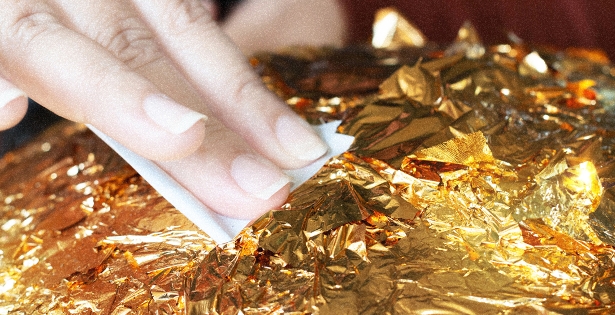
In Search of the Spanish Galleon Gold
The treasures of the Spanish ship "Nuestra Señora de la Concepción", which sank off the coast of Haiti, are considered one of the most valuable treasures ever retrieved from the bottom of the sea.
For three centuries, the sunken galleon "Concepción" fascinated gold seekers. According to archival records, the ship transported the most valuable cargo in the history of the Caribbean islands.
In the photo: a 120-ton multi deck ship was built in 1620 and crossed the Atlantic Ocean several times, transporting gold treasures from the West Indies to Spain.
In the fall of 1641, the "Concepción", laden with gold, set sail for the next voyage. Yet the tragic finale was inevitable. The cause of the shipwreck was a series of fatal mistakes.
Too much gold
In the Mexican port of Veracruz, numerous chests full of gold were brought on board the "Concepción" ship. The cargo did not fit in the ship’s hold, several units of the heavy treasure boxes were placed on the deck. The captain of the ship was against such a decision, but the representative of the Spanish king, who oversaw the loading of cargo, was adamant.
Galleon set sail from the Gulf of Mexico shores with a cargo overload. Due to the delay in loading, the "Concepción" missed weather warnings and couldn’t ensure safe navigation in the waters of the West Atlantic Ocean, where storms and hurricane winds often rage with the onset of autumn.
Bad decisions
The first part of the voyage didn’t go off smoothly. The ship arrived at the port of Havana with sails torn in a storm. The vessel left the Cuban port after minor repairs. A few days later, the "Concepción" got caught in a heavy storm. Giant tidal waves broke the masts of the ship. Given the damage caused by the storm, the ship could not cross the Atlantic.
The captain of the "Concepción" galleon, admiral Juan de Villavicencio, decided to steer the ship toward the port of Puerto Rico. However, the marine navigators miscalculated the coordinates. Several navigators believed that the "Concepción" was already near Puerto Rico, yet most of them insisted on changing the course and heading south.
The captain wanted to head east. However, according to Spanish law, marine navigators of any rank were subordinate to the trade department, not the admiral. The captain could not prove them wrong.
A week later, the "Concepción" hit the large coral reef. Only one lifeboat was lowered onto the water. The captain hoped to pull the ship out of the trap – the boat was supposed to be used as a tugboat.
The team did not have time to free the ship from the cleft between the reefs. A massive hurricane hit the "Concepción", and the ship sunk. 514 people were aboard the ship: the crew and passengers, but only 190 of them were saved.
The shipwreck of the "Concepción" galleon was a huge loss for the Spanish treasury in the XVII century.
46 years later
For several decades after the tragedy, many treasure hunters tried to locate the place of the shipwreck. In 1687, a young American traveler William Phips, who dreamed of finding gold treasures, detected a sunken ship. With the help of the Aboriginal Haitian, he managed to lift a tenth of the galleon’s cargo from the bottom of the Caribbean Sea.
Phips kept the location of the sunken ship secret. He followed his own direction toward the intended destination, even the crew of the ship and the Indians, who lifted the treasure chests up, didn’t know the coordinates of the place. William Phips couldn’t retrieve all the gold from the bottom of the Caribbean Sea. After his death, no one could find the sunken ship for over two decades.
In search of the galleon treasures
In the 20th century, many expeditions of treasure hunters were in vain. Even the famous oceanographer, traveler and French scientist Jacques-Yves Cousteau could not locate the wreckage of the "Concepción" galleon.
American treasure hunter Burt Webber was looking for traces of a sunken ship in the archives of different countries for three years. In Canada, he was able to find the logbook that belonged to William Phips, who extracted some of the "Concepción" treasures from the seabed at the end of the XVII century. The logbook helped Webber locate the wreck site.
In 1977, Webber borrowed money for the expedition from a banker friend, got the permission from the government of the Dominican Republic that granted him exclusive rights to search for treasure in exchange for half of the discovered gold and went to Haiti. The expedition equipment cost Webber $450000.
The prospector was caught between a rock and a hard place: "I had no choice. I had to find the "Concepción" galleon to pay off my debts," said Webber. On the fifth day of the expedition his team was lucky – the sunken ship was finally discovered. Magnetic sensors helped detect the treasure chests. In order to lift the boxes from the bottom of the sea, scuba divers had to remove three hundred tons of corals.
In the photo: the underwater archaeological excavations of the "Concepción" treasures took 11 months.
Webber discovered plenty of coins dated 1640, antique gold chains and Ming dynasty porcelain from China, as well as unique gold jewels and precious stones: necklaces, bracelets and pendants made by skilled West Indian craftsmen.
In the photo: gold chains, earrings and decorative rosettes in the form of blossoming flowers were found on a sunken galleon.
Most of the jewelry found on the ship was later put up for sale in the famous Tiffany & Co. flagship store on Fifth Avenue in New York.
An interesting fact:
During the "Concepción" underwater expedition, the Webber’s team solved the mystery of the XVII century Spanish merchants. One of the treasure chests, lifted from the bottom of the sea, had a double bottom with several kilograms of hidden old coins. This was a direct evidence of the smuggling that existed at that time.
Read also:
Gold at the Bottom of the Ocean




